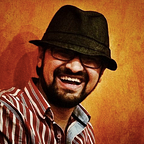The most remarkable theory of how to achieve happiness
Review of Mihaly Csikszentmihalyi’s Flow
Happiness is subjective. And yet, it is hard not to relate to someone else’s happy moments. In this book Mihaly Csikszentmihalyi (pronounced as mihayli sixcentmihayli) compiles decades worth of research to construct a theory of achieving happiness. Well, actually, he uses the term optimal experience, which he defines as:
We have all experienced times when, instead of being buffeted by anonymous forces, we do feel in control of our actions, masters of our own fate. On the rare occasions that it happens, we feel a sense of exhilaration, a deep sense of enjoyment that is long cherished and that becomes a land-mark in memory for what life should be like.
To achieve this state Csikszentmihalyi says we need to achieve control over our consciousness. That will then allow us to enter a state of “flow”, where there is nothing left to desire. The fact that one is not slim, rich or powerful no longer matters. ” The tide of risking expectations is stilled; unfulfilled needs no longer trouble the mind. The most humdrum experiences become enjoyable.”
That quote appeared quite early on in the book and made me very skeptical. But in the light of numerous example that Csikzsentmihalyi gives, many of which you can relate to, it is hard to not accept the validity of his theory. The author readily admits that the theory is not a new one. Some of the oldest examples come, not surprisingly, from mythology. Many religions have approached the idea of happiness and Csikszentmihalyi’s theory only adds to their conclusions.
For instance, a key message in the Bhagwad Gita is that happiness is the result of the journey towards a goal rather than achieving the goal. Similarly Csikszentmihalyi says that a key element of optimal experience is that it is an end in itself, where an action is performed not for some expected future benefit, but simply because the doing itself is the reward.
In one of the most extreme examples of flow that Csikszentmihalyi discusses is one where a paraplegic considers the accident of losing both his legs as the most positive thing that happened to him. When his case is analysed it is clear before the accident, he let life happen to him. Whereas after the accident he had to rethink almost everything he had to do in life, and in doing that he followed a process that helped him achieve flow.
So what do we need to produce flow (one that leads to an optimal experience)?
- Set an overall goal (and as many subgoals as are realistically feasible)
- Find a way of measuring progress in terms of the goals chosen
- Keep concentrating on what one is doing. Such that one is able to make finer distinctions in the challenges involved in the activity
- Develop skills necessary to interact with the opportunities available
- Keep raising the stakes if the activity becomes boring
The above steps will make it clear why sport is the most popular flow activity. Csikszentmikhalyi argues that the same flow can be achieved in work, if step 2 and step 5 are given more emphasis. (PS: For those who’ve learnt Yoga in its truest form, Csikszentmihalyi considers it to be the most thoroughly planned flow activity.)
This is not a self-help book, and it is not a light read. At times it can also get very repetitive. Having laboured through it though, I am left with a pretty robust theory to approach every activity in life. Although I’ve always used some of the tools like goal-setting, measuring progress and raising stakes, using them all in sync and with added focus on the process is certainly bound to change how I experience everything.
